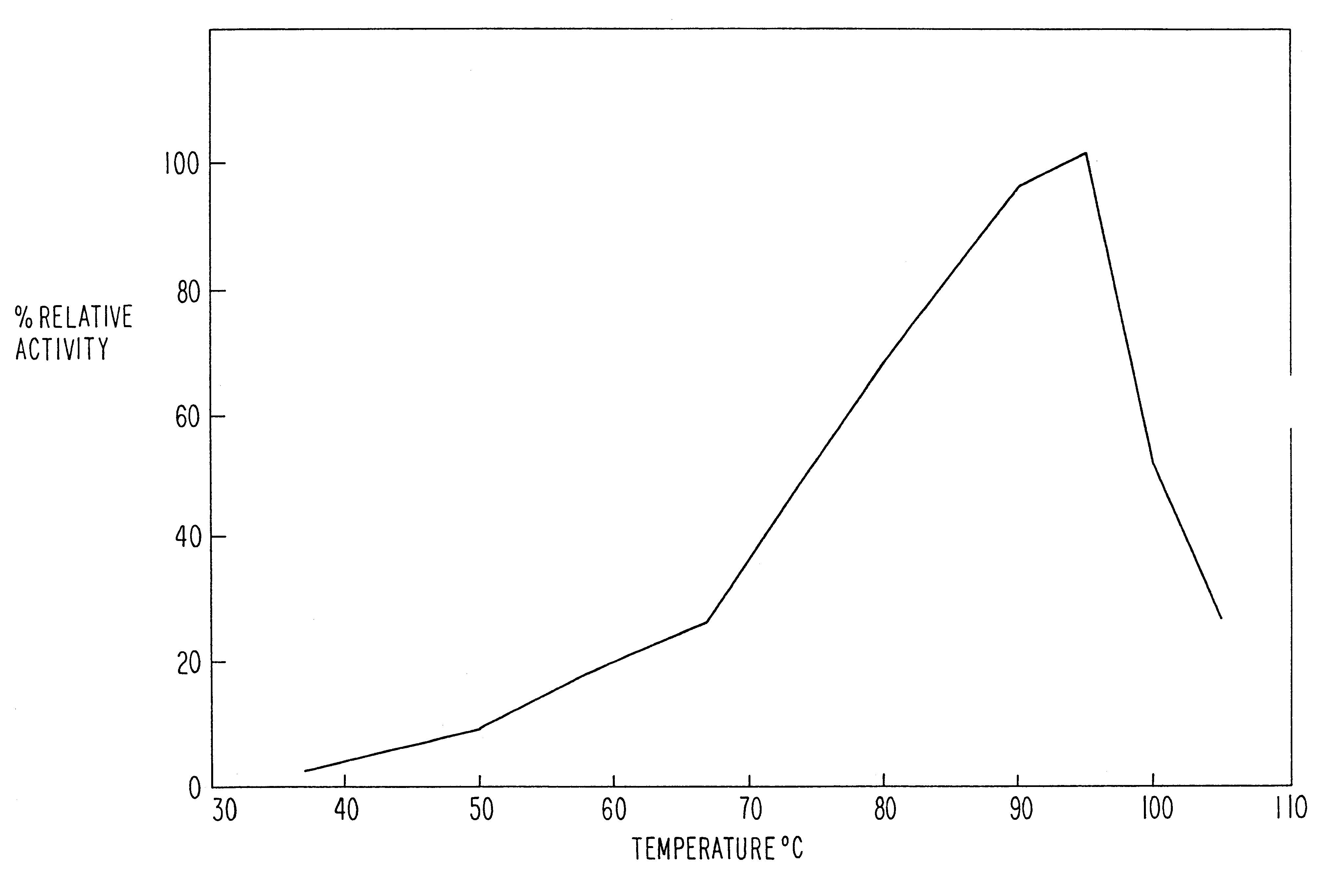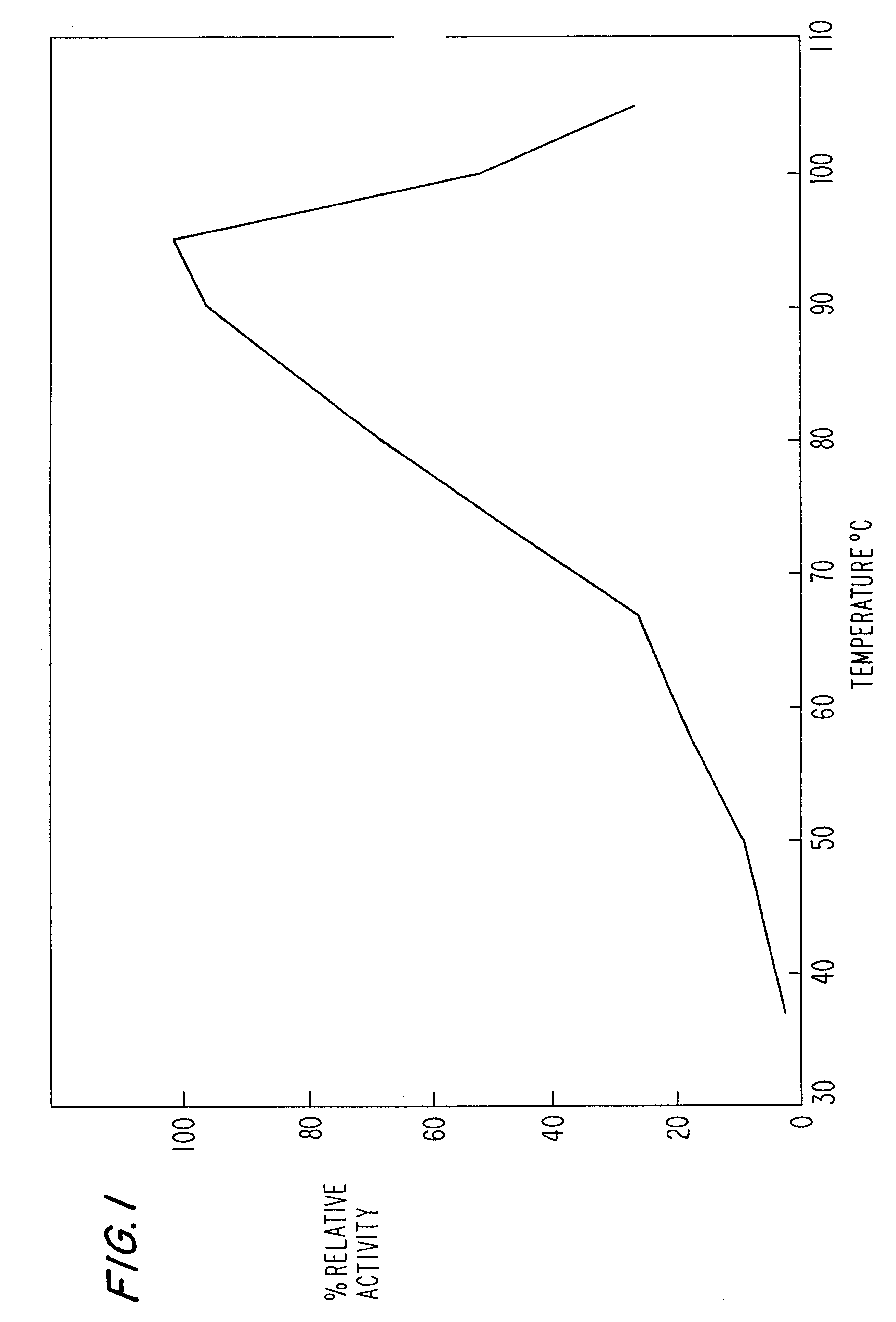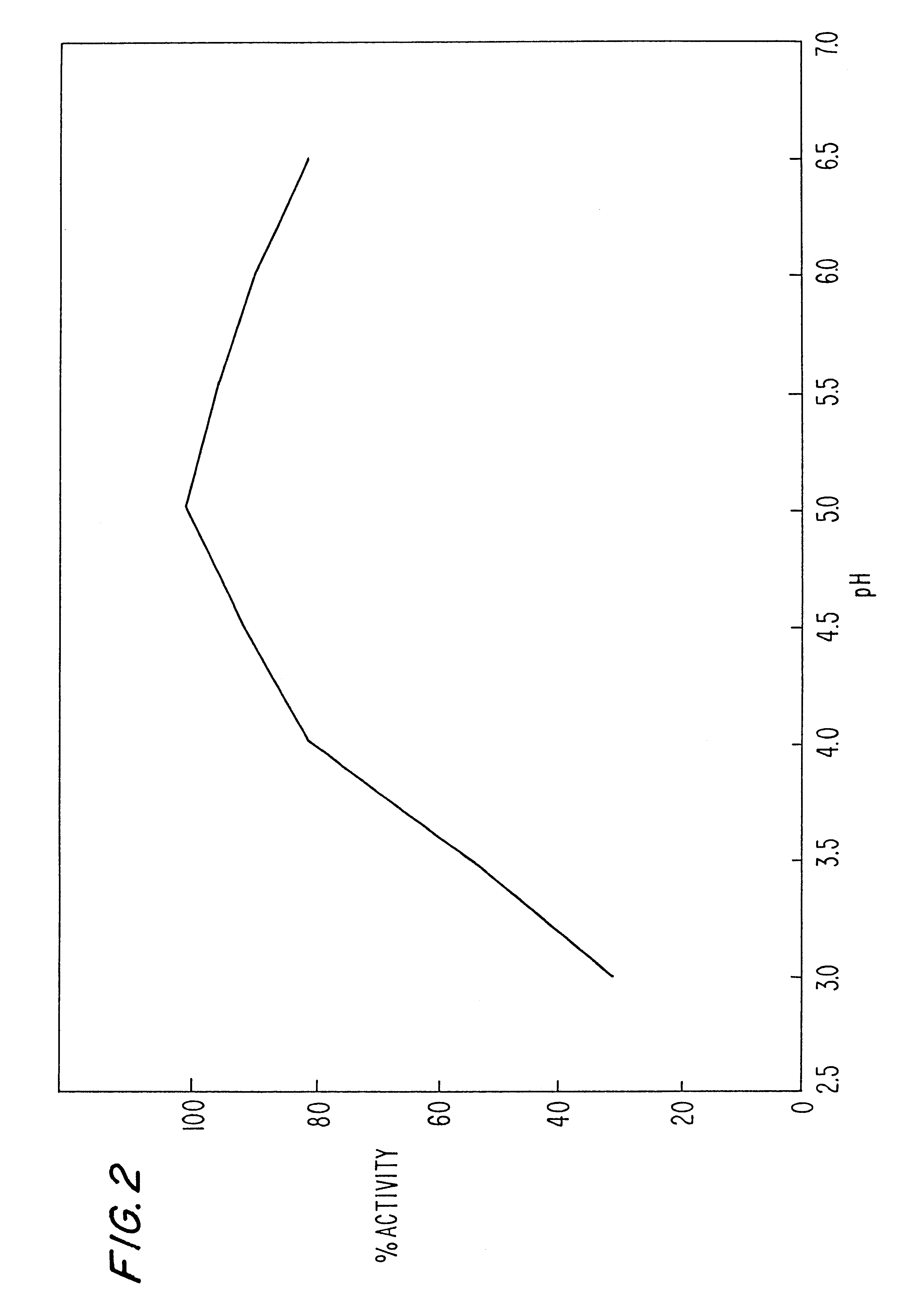Thermostable cyclodextrin glycosyl transferase and processes using it
- Summary
- Abstract
- Description
- Claims
- Application Information
AI Technical Summary
Benefits of technology
Problems solved by technology
Method used
Image
Examples
example 1
Production of CGTase by Anaerobic Cultivation
The strain ATCC 53,627 was cultured in a prereduced liquid medium under argon at an initial pH of 7 comprised of the following components in grams per liter: Maltrin M-100, 5.0; KH.sub.2 PO.sub.4, 2.0; K.sub.2 HPO.sub.4, 6.0; NaCl, 1.0; (NH.sub.4).sub.2 SO.sub.4, 2.5; MgSO.sub.4.7H.sub.2 O, 0.5; CaCl.sub.2.2H.sub.2 O, 0.05; yeast extract, 2.0; Na.sub.2 S, 0.5; cysteine-HCl, 0.5; resazurin (redox indicator), 2 ng; and trace metals 5.0 ml. The trace metals solution was comprised of the following components in grams per liter: FeCl.sub.3.6H.sub.2 O, 5.40; ZnSO.sub.4.7H.sub.2 O, 1.45; MnCl.sub.2.4H.sub.2 O, 1.00; CuSO.sub.4.5H.sub.2 O, 0.25; and H.sub.3 BO.sub.3, 0.10. The trace metals solution was acidified with concentrated HCl to dissolve the salts.
The strain was incubated at 67.degree. C. without agitation for 40 hours. The maximal activity level after 40 hours was 200 Phadebas U per liter broth. The culture broth was centrifuged, then fi...
example 2
Production of CGTase by Aerobic Cultivation of a Transformed Host Organism
Chromosomal DNA was isolated from cells of the strain ATCC 53,627, as follows. Cells (3.1 g wet weight) were suspended in 4.5 ml 25% sucrose--50 mM Tris pH 8.0-40 mM EDTA. The suspension was treated with lysozyme (2 mg / ml) for 30 minutes on ice followed by 30 minutes at room temperature. Pronase (1 mg / ml) was added and the suspension was incubated at 37.degree. C. for 30 minutes. The lysate was extracted twice with 8 ml phenol for 30 minutes after adding 3 ml 10 mM Tris-1 mM EDTA pH 7.4 buffer. The aqueous phase was then extracted twice with 10 ml chloroform. The DNA was precipitated by adding 0.45 ml 3 M sodium acetate-1 mM EDTA pH 7.0 and 2.75 ml isopropanol and incubating on ice for 5 minutes. The DNA was pelleted by centrifugation and was washed once with 70% ethanol. The pellet was dried for 10 minutes under vacuum and then redissolved in 15 ml 10 mM Tris-1 mM EDTA pH 7.4 buffer.
The DNA preparation was su...
example 3
Cyclodextrin Production
A comparison was made of the cyclodextrin yields produced by CGTase of the invention (ATCC 53,627) and the CGTase from Bacillus macerans. Since the Bacillus macerans CGTase is unable to liquefy starch under normal jet cooker conditions, a pretreated starch, i.e. Lintner starch was used. The enzymes were reacted with 15% DS Lintner starch (plus 40 ppm Ca.sup.++) at 50.degree. C. and 90.degree. C., pH 5.0 for 24 hours. The dosage was 4.46 Phadebas U per gram DS starch. The Bacillus macerans CGTase was also reacted at pH 7.0 as above to serve as a control.
The results demonstrate that CGTase of the invention gives superior conversion at 50.degree. C., which is optimum for the prior art B. macerans enzyme. The CGTase of the invention shows essentially the same high conversion at 90.degree. C., where the prior-art enzyme is seen to be nearly inactive. The CGTase of the invention produces .alpha.-, .beta. and .gamma.-cyclodextrin in a ratio (at 50.degree. C.) of 0.74...
PUM
| Property | Measurement | Unit |
|---|---|---|
| Temperature | aaaaa | aaaaa |
| Temperature | aaaaa | aaaaa |
| Temperature | aaaaa | aaaaa |
Abstract
Description
Claims
Application Information
 Login to View More
Login to View More - R&D
- Intellectual Property
- Life Sciences
- Materials
- Tech Scout
- Unparalleled Data Quality
- Higher Quality Content
- 60% Fewer Hallucinations
Browse by: Latest US Patents, China's latest patents, Technical Efficacy Thesaurus, Application Domain, Technology Topic, Popular Technical Reports.
© 2025 PatSnap. All rights reserved.Legal|Privacy policy|Modern Slavery Act Transparency Statement|Sitemap|About US| Contact US: help@patsnap.com



